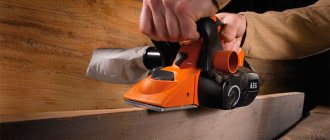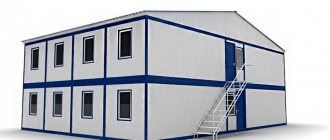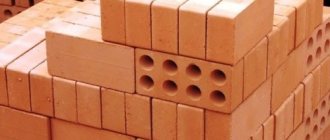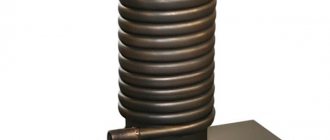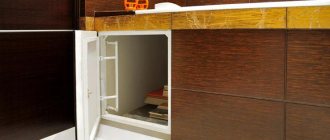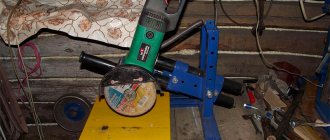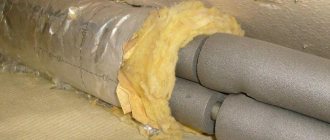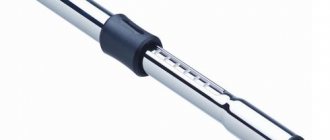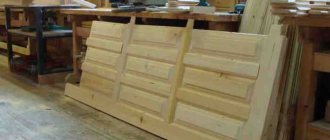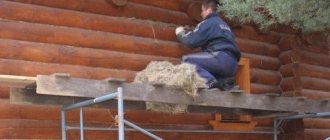Updated: 04/23/2021 12:51:21
Expert: Konstantin Borisovich Polyakov
When working with wood, many manual and electronic tools are used. Planers and jointers are among the most common among woodworkers. In order not to spoil the work, it is important to have a clear understanding of the specifics of each of them. How high-quality will the result of processing the product be and how are planers and jointers generally used? Our experts will tell you.
Types of planes and their purpose
In terms of the quality of the resulting surface, a plane is an intermediate link between a rough (primary) processing tool and a final finishing tool. An important difference between a plane is the angle of inclination of the knife. It is approximately 30 angular degrees.
Existing types of planes, depending on the tasks being solved, are divided into two categories. The first category includes tools with a flat sole. The second ones are made in the form of a complex stepped figure. The devices of the first category include planes of the following types:
- single;
- double;
- sherhebel;
- sander;
- tzinubel;
The second category includes:
- zenzubel;
- kantenhobel;
- tongue and groove;
- federgubel;
- mold;
- staple
Structurally, the plane consists of the following elements:
- housing (high-quality steel or durable hardwood is used for its manufacture);
- two handles front and back (the first is called the horn, the back is the stop);
- in the center there is a rectangular slot (it contains a cutting metal plate with a fixation and adjustment device);
- chip breaker;
The adjustment device allows you to change the depth of cut, the angle of inclination of the cutter to the workpiece, and the quality of processing.
To obtain the best effect after rough processing (using Scherhebel), use a single and then a double plane. It has two knives, each of which is capable of solving specific problems. The first provides preliminary leveling of the surface. His knife is sharpened with a small radius of curvature. This form avoids the formation of defects on the surface (for example, so-called “burrs”).
The double tool is equipped with a second cutting knife. It's called a chip breaker. The distance from the cutting edge to the workpiece is adjusted using a special fastening system. Usually it is set to approximately 2 mm. The value depends on the characteristics of the wood: density, grain direction, humidity.
Planers for working on complex (shaped) workpieces have a curved lower part of the body (sole). A special knife is made for such a tool. Its shape follows the surface of the sole. Depending on the shape of the surface (oval, stepped or complex), they try to select a plane with a similar working surface. This significantly speeds up the product production process.
For faster processing, use an electric carpentry plane. In large industries, special machines with high processing speed are installed.
Comparative characteristics
- Since a jointer is a type of planer, there are not many differences between them. Both products are used to remove “excess” material from workpieces in order to obtain a perfectly flat surface. The main difference is the degree of processing of the product.
- The plane is used as a tool for primary processing. The thickness of the removed wood layer is usually set when setting up the equipment. Wood planing is primarily intended to eliminate knots, bumps and other irregularities. The design itself is always simple: 2 elements - a block and a knife.
- The jointer, as a rule, has a longer body, which ensures that the product is pressed very tightly against the wood being processed. Most often, the jointer is equipped with two blades, allowing for finishing.
Planer and its purpose
The final processing of wooden blanks is carried out using a jointer. According to the processing method, they are divided into two types: manual and electric. The second category includes the so-called jointing machine. With its help, finishing is carried out and imparting the desired quality to flat, shaped, and complex products.
The jointer is always equipped with two knives. They are installed one after another. Each of them is located in a special hole in the housing and has an individual fastening system and depth adjustment. The presence of two knives allows you to improve the quality of processing, reduce time, and reduce worker fatigue. Jointer knives have a larger sharpening angle compared to a plane. Consistent passing over the surface ensures high-quality processing.
The length of the body is three times longer than that of a conventional plane. The cutting block of the jointer has a special chip breaker or chip breaker. Together with an extended body, it is possible to significantly increase the degree of finishing. A handle is attached to the body of the jointer, ensuring ease of operation and uniform distribution of pressure over the entire cutting surface of both knives.
The types and sizes of joiner jointers are determined by the following criteria:
- purpose;
- linear dimensions;
- geometric shape of the workpiece (flat or complex);
- angle of inclination of knives;
- body material.
To solve some problems, a shorter jointer is used. The length of its body does not exceed 50 cm. Such a tool is called a semi-joint. Each of them is assigned an individual number. The number determines the scope and characteristics of the tool.
Half jointers, numbers 5 and 6, are recognized as popular. They are characterized by a difference in the width of the blade. It is ten millimeters. In appearance they are very similar to standard planes. This similarity is especially characteristic of the width of the cutting knife. A distinctive feature is the angle of inclination. It is installed depending on the tasks being solved. In the capable hands of the semi-jointer number five, the semi-jointer copes perfectly with the posed problems. Thanks to its size and thoughtful design, its blade cuts the surface layer more easily. This jointer can handle any type of wood. It is quite easy and convenient for them to level wooden products that have a large area. This is possible thanks to the long block when jointing edges.
The semi-joint with number 6 has more compact dimensions. The body length is significantly shorter than a standard jointer. Small dimensions made it possible to obtain a lighter weight tool. This made it possible to carry out work for a long time, reduce fatigue, and help maintain the high quality of the resulting form. This circumstance refers to the first advantage of this semi-jointer. The second advantage is the ability to ensure fairly even planing of the workpiece surface. Its small dimensions allow it to be considered a tool for use outside the home workshop.
Convenient design, small dimensions are especially suitable for planing large-area panels. The location of the cutting tool and its angle of inclination allow processing not only along the direction of the wood fibers, but across it, that is, at an angle of 90 degrees relative to the original direction. The semi-jointer number six is considered the first tool with a relatively wide blade. The wider blade provides good surface coverage, hence a smoother surface. With this jointer you can easily and efficiently process the flat surfaces of any molded products.
How to joint boards correctly
Jointing is the treatment of the surface of a wooden workpiece with a jointer of any type.
To work with hand tools, the workpiece is fixed on a workbench. The wood fibers should be located in the direction of movement.
You need to take the jointer with both hands: with your left hand by the handle, with your right hand by the block. For left-handed people the order is opposite. The tool is moved along the surface along the fibers, pressing with its own weight on the device, pushing it forward. At first, the chips will be of different sizes; as the product is ready, they will become long and even in thickness.
The surface is processed layer by layer to avoid height differences and the formation of unnecessary holes.
How to joint with an electric jointer:
- Secure the device to a workbench with a board support.
- Turn on the power and place the board on the blade against the stop.
- Repeat as many times as necessary to get results.
When working with equipment, you must observe safety precautions:
- Keep your hands away from the blade.
- Wear protective clothing.
- Use the clamp holders to move the board. They will protect your fingers from the knife.
To avoid cutting off excess, apply a chalk line to the surface to be treated. The smoothness of its disappearance will indicate the uniformity of the cutting. The line has disappeared, which means the surface has become smooth.
Edge processing is performed in the same way as grinding the main plane. It is enough to turn the workpiece over with the desired side facing the blade and repeat the steps.
Differences between a jointer and a planer
The instruments are similar in appearance. To find out how a jointer differs from a planer, you need to compare the following characteristics:
- tasks to be solved (which tool allows for finishing, which should be used at the final stage);
- design features;
- geometric dimensions;
- sharpening angle of the blade of the main and additional knife;
- material used to make the body;
- features and number of knives.
A jointer, unlike a plane, is designed to perform finishing (finishing) surface treatment. The body of the jointer is usually made of wood. It contains not one knife, but two. The wooden body ensures smoother movement (sliding) of the tool along the surface of the workpiece being processed. In terms of its geometric dimensions, the jointer significantly exceeds a standard plane. This design increases the speed and productivity of the processing process.
Which one is better to choose?
The answer to the question of how exactly a professional stationary jointer differs from manual tool models remains relevant. At the same time, potential buyers are interested in the performance indicators of these two categories of devices. But most often the questions concern which model to choose in a given situation.
The list of the most important includes some key selection criteria.
- The power of the jointer, which is the main characteristic of any power tool, directly affects its performance. As a rule, this parameter of household appliances varies in the range of 400-1000 W, and the power of stationary machines reaches 2200 W.
- The number of revolutions must be at least 10,000 per minute.
- The width of the workpiece processed in one pass.
- Planing depth.
- Equipment weight. In situations with manual models of electric jointers, this figure varies from 2 to 5 kg. Heavier specimens, as a rule, belong to the professional category.
It is the technical characteristics that determine the purpose of the tool. However, when choosing, it is recommended to take into account the ergonomics of the models in question. No less important will be the shape of the jointer body and the list of additional elements and functions.
Types of planes and their purpose
Even now it is difficult to imagine performing any private carpentry work without the use of specialized tools, such as a plane , jointer , sherhebel and other special devices.
Each of these types of instruments has its own unique character. Yes, now this tool is becoming a thing of the past, it is being replaced by mass production, where everything is run by automated lines, I doubt any of you are making stools in your garage, but it’s time to remember the lessons of labor and pay tribute to the good old planes! The main parts of the plane are: a piece of iron (knife), a block and a wedge . Depending on the size, purpose and equipment with additional devices, planes can be divided into many subspecies and types.
Among the existing modifications are:
- manual (mechanical) - made from plastic, metal, wood or combinations thereof - are not much different in their functionality, but the technical characteristics directly depend on the material used to make the body of the construction tool;
- electric – thanks to the additional equipment with an electric motor, they allow you to perform large volumes of work at high processing speeds.
Pioneers in wood blanks
The most prominent representatives of hand carpentry tools are:
- Sherhebel is a real “heavy artillery” among the whole variety of carpentry tools. It is widely used when planing wood that has not previously been processed. This is a fairly massive and heavy device with a metal body. The main purpose is rough primary processing to obtain products of the required size (shape) and planing to a great depth to remove a thick layer of wood. It will not be possible to achieve a flat and smooth surface with the help of Sherhebel. For these purposes, other types of planes are often used. The design of the tool resembles the appearance of a conventional plane, but the Scherhebel iron is installed at an angle of 45 degrees relative to the sole and has a rounded blade. At one time the tool removes a layer of up to 3mm. At the same time, deep hollows remain in the places where the cherhebel is processed, which require further leveling. Thanks to the Scherhebel being equipped with an oval cutting edge, it is possible to plan wood across its grain without preliminary longitudinal tearing. Depending on the hardness of the wood being processed, the sharpening angle of the scherhebel may differ;
General information
The generic concept in our case will be plane. This invention, which appeared in the distant past, is used for planing wood. Using such a tool, you can level the surface of the material, adjust the shape and size of the workpiece, and, if necessary, make extended recesses. This is what a plane, which is traditionally used in carpentry, looks like:
Plane
But since the tasks involved in processing the material can be different, there are many types of popular devices. They differ in size, device features and additional equipment. Here are a few examples: Sherhebel
, intended for trimming workpieces that have just come out from under a saw or ax;
mole cricket
, which is operated by two carpenters;
folding
, used for processing recesses. A jointer is also a subtype of a planer. This is the tool:
Jointer
What is the difference between a sherhebel and a planer?
In essence, a sherhebel is the same plane, only intended for rough processing of wood. The sherhebel differs from the plane in the semicircular sharpening of the blade, as well as in its width - the sherhebel has a smaller blade than the plane. At the same time, it protrudes from the block by 2-3mm.
- A jointer is a hand plane with a double cutter. The purpose of the device is the final and precise processing of wood when leveling the plane of a significant volume due to a longer block, as well as for jointing edges. On average, the length of the block can exceed 2-3 times the size of a standard plane. The jointer knife is equipped with a chip breaker and a handle to facilitate operation of the device. The jointer can be produced with either a single or double knife.
Comparative characteristics
- Since a jointer is a type of planer, there are not many differences between them. Both products are used to remove “excess” material from workpieces in order to obtain a perfectly flat surface. The main difference is the degree of processing of the product.
- The plane is used as a tool for primary processing. The thickness of the removed wood layer is usually set when setting up the equipment. Wood planing is primarily intended to eliminate knots, bumps and other irregularities. The design itself is always simple: 2 elements - a block and a knife.
- The jointer, as a rule, has a longer body, which ensures that the product is pressed very tightly against the wood being processed. Most often, the jointer is equipped with two blades, allowing for finishing.
What is the difference between a jointer and a planer?
The main difference between a jointer and a plane is the number of blades: a plane has one, and a jointer has two. The structure of the jointer itself is not much different from the planer, but its body is much longer. Thanks to this, using a jointer you can process a much larger area in less time than with a planer.
According to the existing classification, carpentry tools for wood processing are conventionally divided into:
- flat planes;
- figure planers
End cleaning
To clean the ends, it is necessary to carry out the planing “from yourself”, with short pushes. Thanks to this processing principle, the wood fibers will be cut crosswise and less effort will be required.
To avoid chipping along the edges, it is necessary to chamfer them in advance. An even better option would be to process first from one end to the middle, and then from the other end to the middle.
The blade no longer deteriorates even during operation, but during its interaction with other objects, when not in use. During breaks, it is necessary to lay the plane not on the blade, but on its side. During long-term storage or during transportation, the knife must be pushed inside the block.
vote
Article rating
Main types of flat planes
- The semi-jointer is a shortened version of the jointer, as it is significantly smaller in size. The block or sole of the semi-jointer reaches 60cm, and the width of the cutter is up to 8cm, just like the jointer. Its purpose is to plan large wooden parts.
- Medvedka - unlike conventional types of planes, it has paired side transverse handles, greater width and length. The iron in such a tool is held by a special wedge. As a rule, two people work with the bear, holding the handles together. This type of blade is used when planing large areas of wood, for example, boards of external cladding of houses, ceilings or floors. The bear removes a 1mm layer of wood.
- Sander - designed for final cleaning of wooden surfaces and correction of defects that arose after previous planing. Using a grinder, the areas around knots, ends, irregular wood structure, etc. are cleaned. The knife in such a plane is installed double with a chipbreaker and a straight blade with a knife attachment angle of 60 degrees.
- Tsinubel - used to give the processed wooden surfaces a slight roughness, as well as for planing curly wood. This makes it possible to improve the level of their adhesion when arranging adhesive connections between parts. Tsinubel knives have grooves that form teeth when sharpened. By placing the knife in the block at an angle of 80 degrees, even twisted wood can be processed without scoring. The tzinubela contains single knives with a straight serrated blade. The average length of the last is 20cm, width – 6.5cm and height – 6.5cm.
- End plane - used for planing small surfaces of wood with a tangled structure, as well as for processing the ends.
- Single planer - used for secondary planing of wood. During operation, chips are formed without breaking, and small chips or nicks may remain on the surface of the wood.
- The planer is double - in addition to the installed knife, it has a chipbreaker, which improves the quality of planing.
Types of figure planing planes
- Zenzubel - assumes the presence of a double knife, due to which the quality of the processed surfaces becomes quite high. The tool is used for stripping quarters and planing perpendicular surfaces. The width of the knife ranges from 33mm, and its shape resembles a spatula. It is “closely related” to the falsebel.
- Federgubel - makes longitudinal projections along the edges of wooden blanks. It is distinguished by a special blade shape, which forms a rectangular protrusion along the edge of the product.
- Foldsebel – cleans quarters. Equipped with single knives of straight or oblique shape. The plane has a stepped sole, which is removable in some models. This allows you to select the folds of the required profile and size to suit the shape of the tree.
- Shtabgobel or stabgaltel - gives wooden parts a rounded shape by installing concave knives.
- Tongue and pile – makes longitudinal grooves along the edges of the workpieces. The plane consists of two blocks, which are connected to each other with special iron screws. One of the blocks is a guide, and the other is a fastening block and holds the knives.
- Kalevka is the main purpose of this plane: curly processing of wood and giving a special shape to workpieces. Most often used in the production of wooden cornices, baguettes or doorways. This type of plane has special cutters with figured edges and a multi-stage sole, installed depending on the shape of the profile that needs to be obtained.
- Primer – grooves are planed across the fibers of a trapezoidal cross-section. It is a block into which a pointed hook in the form of a chisel is inserted on the side.
- Gorbach - has a curved block that allows you to process convex or concave surfaces with internal and external diameters.
In carpentry you can rarely get by with just one type of plane. After all, when processing wooden blanks, you have to perform more than one type of operation using various construction tools. So, some planes work only in pairs, for example, federgubel and tongue and groove. Or planes are used sequentially: for roughing - sherhebel, and for finishing - a jointer.
Sherhebel, planer, jointer: features and differences of tools
For those who know nothing about carpentry, there is no difference between a sherhebel, a plane and a jointer. The tools actually look very similar and are used in the woodworking process. However, there are differences between them, the RMNT website will tell you about them.
And the sherhebel, and the plane, and the jointer, intended for manual work, are structurally very similar. All of them consist of a sole, a block, a blade, adjusting screws and two handles for working with both hands, which ensures the required pressing force of the tool.
Important! The body of the instruments can be wooden or metal. Wooden tools are used for processing soft wood, metal tools are used for hard wood.
Wooden sherhebel
The main difference between a sherhebel and a planer and jointer is the blade. In Scherhebel it is semicircular, oval, leaving quite deep grooves and allowing you to remove a thick layer of chips - up to three millimeters. Accordingly, the hole for removing chips is larger. In addition, the Scherhebel has a narrower and shorter box design.
Sherhebel and plane
There is also a significant difference in the angle of the blade. In Scherhebel it reaches 45 degrees, that is, the maximum deepening is achieved. The jointer removes chips at an angle of 13 degrees, the tilt is minimal. The plane is at an angle of about 30 degrees.
Safety regulations
To avoid injury when planing, you must follow a number of rules.
- Use a tool that is in working order and configured according to the requirements.
- The workpiece to be processed is securely fixed in the workbench.
- If there are knots, act carefully and release the knife blade as little as possible.
- Planing should be carried out longitudinally relative to the workbench.
- When planing, hold the handles firmly with both hands, do not be distracted.
- It is mandatory to disassemble and assemble the tool over a workbench. This also applies to settings.
- It is unacceptable to clear the slot from chips on the extreme side of the cutter, so as not to cut your hand.
- Use a tray to store the tool. Place the plane in it with the sole down so that the blade does not protrude outward.
- Dropping the plane knife is absolutely unacceptable.
- When passing the tool, keep the blade away from you.
- It is unacceptable to check the sharpness of a knife with your hand.
If you follow the rules for using a plane to level the board and safety precautions, the risk of injury during the work process is minimized.
Sources
- https://molotok34.ru/instrument/fuganok-foto.html
- https://moiinstrumentu.ru/vidy-rubankov-po-derevu.html
- https://stankiexpert.ru/tehnologicheskaya-osnastka/instrument/fuganok.html
- https://expertology.ru/raznitsa-mezhdu-rubankom-i-fugankom/
[collapse]
375
Sherhebel, planer, jointer: features and differences of tools
For those who know nothing about carpentry, there is no difference between a sherhebel, a plane and a jointer. The tools actually look very similar and are used in the woodworking process. However, there are differences between them, the RMNT website will tell you about them.
And the sherhebel, and the plane, and the jointer, intended for manual work, are structurally very similar. All of them consist of a sole, a block, a blade, adjusting screws and two handles for working with both hands, which ensures the required pressing force of the tool.
Important!
The body of the instruments can be wooden or metal. Wooden tools are used for processing soft wood, metal tools are used for hard wood.
The main difference between a sherhebel and a planer and jointer is the blade. In Scherhebel it is semicircular, oval, leaving quite deep grooves and allowing you to remove a thick layer of chips - up to three millimeters. Accordingly, the hole for removing chips is larger. In addition, the Scherhebel has a narrower and shorter box design.
Sherhebel and plane
There is also a significant difference in the angle of the blade. In Scherhebel it reaches 45 degrees, that is, the maximum deepening is achieved. The jointer removes chips at an angle of 13 degrees, the tilt is minimal. The plane is at an angle of about 30 degrees.
If we talk about wood processing processes, then all three tools are used at different stages:
1. Sherhebel is “heavy artillery”. It is used at the very first stage of rough wood processing, immediately after using an ax and saw, hacksaw. It cannot be used to achieve a perfectly smooth surface, but preparation for further processing is quick and efficient.
2. The plane is used after the sherhebel, and can, in principle, replace it, but it all depends on the condition of the wood and the purposes of its processing.
3. A jointer is a tool for finishing the workpiece. It is this that allows you to achieve a perfectly smooth surface by removing small chips.
The jointer is much longer than the planer and cherhebel. It is intended for leveling large surfaces. The second design feature is the presence of a double knife. In addition, the jointer blade has a chip eliminator to ensure the wood remains smooth after this final finishing step.
Important!
The blade width of the Sherhebel is 35 millimeters.
And with a jointer it can reach up to 80 millimeters. The length of the jointer block is 50–90 centimeters. We state: Sherhebel is used exclusively for rough processing of wood. Its small, rounded blade ensures the deepest cutting into wood, because it protrudes from the block by two to three millimeters and has a reduced width. On the contrary, the wide blade of the jointer literally glides along the surface of a flat piece of wood, removing the slightest irregularities. A plane is one of the more versatile tools.
Important!
A carpenter's workshop will definitely have a sherhebel, a plane, and a jointer.
Using all these tools will allow you to process wood in stages and with the highest quality possible. http://www. rmnt. ru / - RMNT website. ru
Types of planes and their purpose
The Interskol company offers a choice of carpentry tools. Among them there is the most basic one - a plane. It is usually made from hardwood. In addition to it, there are a number of tools that a carpenter can use, for example:
- Joiner;
- Sherhebel and others.
Each type has its own specialized characteristics and purpose. Therefore, it is important to know which tool a carpenter should use at what point in the work. Although today machines do everything for people, there is still a jointer that is in no way inferior to its brothers. It occupies a worthy place in a carpenter's workshop.
The main parts of the models can be called a knife made of iron, a block, and a wedge. Planers are divided into a number of subspecies and types precisely due to their purpose, as well as additional devices.
Various modifications
Let's pay attention to the different types of carpentry tools:
- Mechanical or manual. It is sometimes made of plastic. But more often made of wood and metal. There are varieties made from combined materials. The quality of the body is directly related to what lies at the heart of the jointer. Its functionality also depends on the type of wood that needs to be sanded;
- Electric. Its functional mode is wider. Work gets done faster thanks to the electric motor. High processing speed allows you to sand a large amount of wood.
The wooden jointer is most widely used at home, in the carpenter's workshop. Let us consider below how a plane differs from other similar devices for processing wooden surfaces.
What came first?
Sherhebel originally appeared. Such devices differ only in name from other similar instruments. But they add to their diversity. Sherhebels are used when planing wood that has not yet been processed. You could say this is a rough cut.
It looks massive, the weight is very heavy, since its body is made of metal. The main purpose is primary processing to obtain a product from wood of the desired size, giving it a shape. If, for example, this is a trough or a future solid boat, then Sherhebel is used, since it planes to a great depth.
You won't get a smooth surface, but there are other tools for this. It looks like a regular carpentry device. Only his knife is set at an angle of forty-five degrees, which is rounded at the bottom. This way you can remove up to three millimeters of chips at a time. Deep hollows should then be processed and leveled. The oval cutting edge allows you to work without longitudinal tearing. The hardness of the wood determines at what angle it is better to turn the iron to achieve better processing. It's very easy to do. You just need to use a screwdriver to set the knife to the desired degree.
Types of planes
Speaking about the types of planes and their purpose, let us pay attention to the classification of carpentry tools:
- It can be used for flat planing;
- And figured processing is possible.
First, let's look at the first type.
- Half jointer. It is represented by a shortened version of its brother, significantly inferior in size. The sole of the semi-jointer can reach sixty centimeters. The width of the incisor is up to eight centimeters. The device is intended for processing large areas of wood;
- Medvedka. This tool has large paired handles. Its width and length are also large. A special wedge is used to hold the knife. Work with the bear is carried out by two carpenters who hold it by the handle on each side. The device is used to process large areas of wood, for example, boards that are going to be used to sheathe the outside of a house. Or decorate the walls and ceiling with wood. At a time, the bear removes chips one millimeter thick;
- Sander. It is used when you need to clean a wooden surface. With its help, defects that arise after processing wood with other devices are corrected. Easily cleans areas around knots and ends. If the wood has an uneven structure, then use a sander. It can handle any patterns. It has a double iron designed for scrapping shavings. It is presented in the form of a straight blade. The squat angle is sixty degrees;
- Zinubel. It is used if the surface needs to be given a slight roughness. It is also used to plan twisted wood. This treatment allows you to glue several surfaces more tightly, since the glue clings to the wood better, and the structure can last a very long time. Tsinubel knives have grooves, which give roughness to the wooden surface. They are placed at an angle of eighty degrees. Therefore, scoring does not appear even when processing twisted wood. Knives are usually single, with a serrated, straight blade. The length of the block reaches twenty centimeters. It is six and a half centimeters in width and the same in height;
- Tortsovy. Used for planing ends, as well as for small surfaces of wood that has an uneven structure;
- Single. Used for re-planing wood. The chips usually do not break, but small chips and nicks are possible on the surface;
- Double. Compared to a single one, it has two irons, one of which breaks the chips, which turns work into pleasure, improving the quality of processing.
Figure planing
The following planes can be used for figure planing:
- Zenzubel. It has two knives, so the quality of work remains high. Used to clear quarters or plan perpendicular surfaces. The width of the iron is approximately thirty-three millimeters with a blade-shaped shape. This is the closest relative of the falsebel;
- Federgubel. Its task is to process longitudinal protrusions located on the edges of the workpieces. The blade has a special shape that allows you to create rectangular protrusions along the edge of the product;
- Falsebel. It is used to clear quarters. Single knives, having both straight and oblique shapes. The tool has a stepped sole that can be removed. Not all models have this function. But where possible, it is easy to change the folds of the desired profile and size in order to better process the wood;
- Stabgobel, stabgaltel. Thanks to it, you can give a wooden product a rounded shape. This is possible due to the iron made in the shape of a concave blade;
- Tongue and pile pile. They form longitudinal grooves that are located on the edges of the workpieces. The rabbet has two blocks connected by special metal screws. One of them directs, and the other secures the work, holding the knives;
- Mold. Its main purpose is to figuratively process wood to give it a special shape. Used when creating cornices for houses, baguettes or doorways. Her incisors are special. Their edge is figured. The sole has many steps, which are selected depending on the shape of the future part and what exactly the master wants to achieve;
- Gruntubel. It is used to plan grooves across the wood fibers in the form of a trapezoidal section. The appearance is represented by a block with a pointed hook inserted into it, used as a cutter;
- Gorbach. The name itself speaks for itself. Its block is curved, which helps to process surfaces that have a convex or concave shape. The diameter is completely unimportant. The humpback will process any curved surface.
